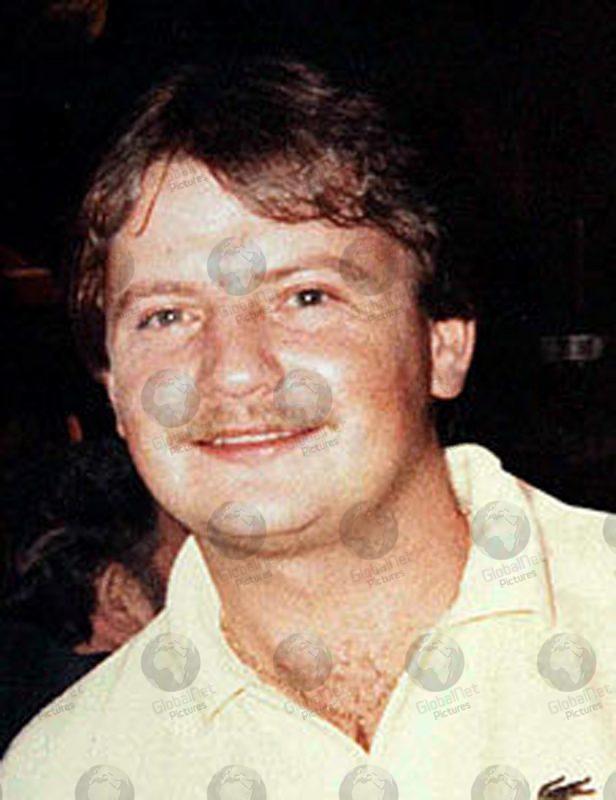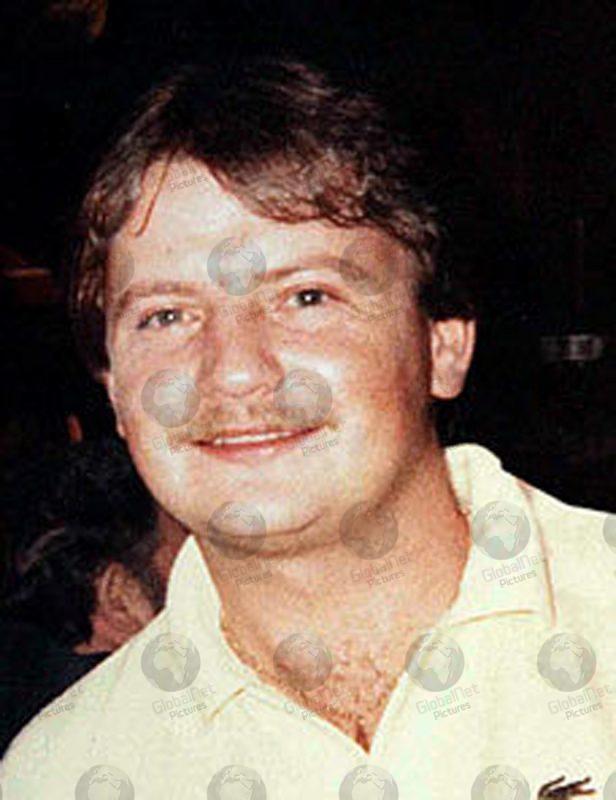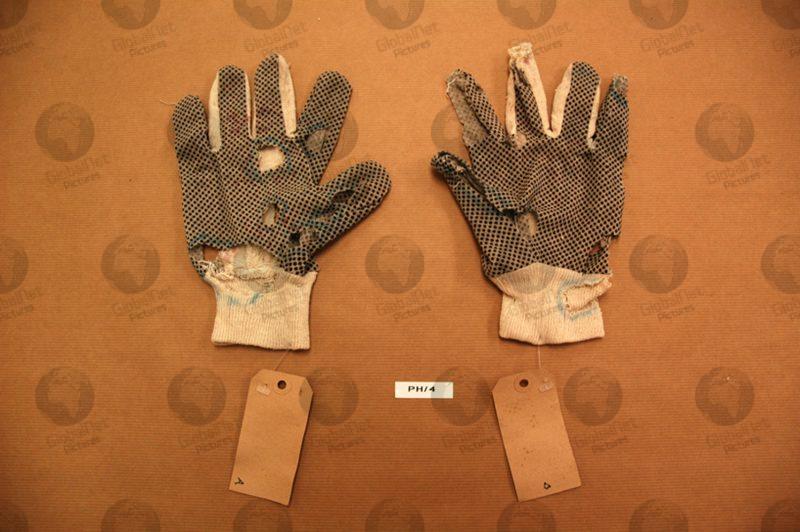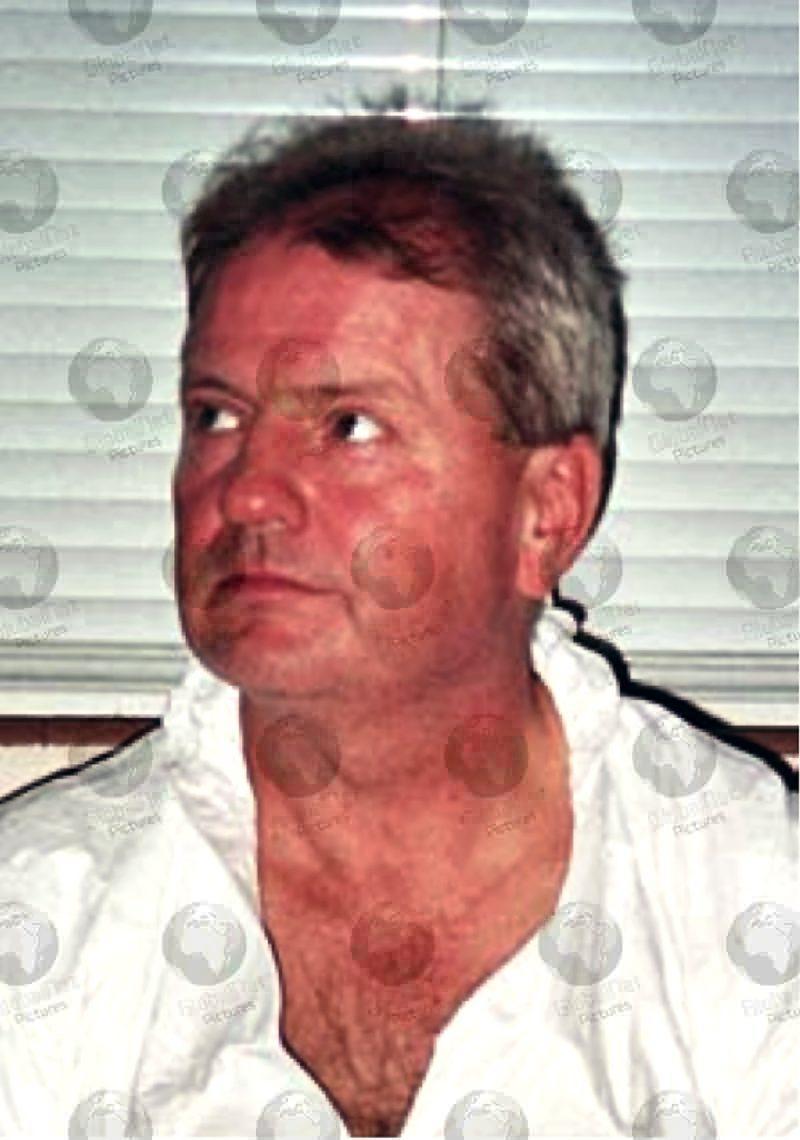

Serial killer dubbed “Ipswich Ripper” and “Mondeo Man” by prostitute victims
Steven Gerald James Wright (born 24 April 1958) is an English serial killer, also known as the Suffolk Strangler and the Ipswich Ripper. He is serving life imprisonment for the murder of five women who worked as sex workers in Ipswich, Suffolk. The killings took place during the final months of 2006, and Wright was found guilty in February 2008.
Wright was born in the Norfolk village of Erpingham, the second of four children of military policeman Conrad and veterinary nurse Patricia. He has an older brother and two younger sisters. While Wright’s father was on military service, the family had lived in both Malta and Singapore. Wright’s mother left in 1964 when he was 6; his father divorced his mother in 1977; both remarried. Wright and his siblings lived with their father, who fathered a son and a daughter with his second wife, Valerie.
He left school in 1974, and soon afterwards joined the Merchant Navy, becoming a chef on ferries sailing from Felixstowe, Suffolk. In 1978, in Milford Haven, at the age of twenty, he married Angela O’Donovan. They had a son, Michael. The couple separated in 1987, and later divorced. Wright became a steward on the QE2, a lorry driver, a barman and, just prior to his arrest, a forklift truck driver. Former sex worker Lindi St Clair said she was attacked by Wright in the 1980s. His second marriage was to 32 year old Diane Cassell at Braintree register office in August 1987. They split in July 1988 while he was a pub landlord in Norwich.

It was during this time that he also managed a public house in South London. This post was lost due to his gambling and heavy drinking. He was convicted in 2001 of theft, having stolen £80 to pay off his debts. This was his only criminal conviction prior to the murders.
It is known that throughout these times Wright built up large debts largely through gambling, and had recently been declared bankrupt. Wright had twice tried to commit suicide, first by carbon monoxide poisoning in his car in 1994; secondly in 2000, by an overdose of pills.
Ipswich serial murders
The Ipswich serial murders, commonly known as the work of the Suffolk Strangler, took place between 30 October and 10 December 2006, during which time the bodies of five murdered women were discovered at different locations near Ipswich, Suffolk, England. All of the victims were women who had worked as prostitutes in the Ipswich area. Their bodies were discovered naked, but there were no signs of sexual assault. Two of the victims, Anneli Alderton and Paula Clennell, were confirmed to have been killed by asphyxiation. A cause of death for the other victims, Gemma Adams, Tania Nicol and Annette Nicholls, was not established.

Work gloves found at Wright’s home among clothing that had DNA links to victims Paula Clennell and Annette Nicholls
Suffolk Police linked the killings and launched a murder investigation codenamed Operation Sumac. Due to the size of the investigation police officers were drafted from several other police forces. Two arrests were made in connection with the murders. The first suspect, who was never officially named by police, was released without charge. Forklift truck driver Steven Gerald James Wright, then aged 48, was arrested on suspicion of murder on 19 December 2006 and charged with the murders of all five women on 21 December.
Wright was remanded in custody and his trial began on 14 January 2008 at Ipswich Crown Court. Wright pleaded not guilty to the charges, although he admitted having sex with all five victims and that he had been patronising prostitutes since the 1980s. DNA and fibre evidence was presented to the court that linked Wright to the victims. He was found guilty of all five murders on 21 February 2008, and was sentenced the following day to life imprisonment, with a recommendation that he should never be released from prison.
The murders received a large amount of media attention, both nationally and internationally. The press often compared the murders to those committed by the Yorkshire Ripper, Peter Sutcliffe, who murdered 13 women and attacked seven others (mostly prostitutes) between 1975 and 1981. There was some concern that the level of media coverage at the time could jeopardise a trial. The murders also sparked debates in the media over the laws surrounding prostitution.

Police Investigation
The body of a young woman was discovered in the water of Belstead Brook at Thorpe’s Hill, near Hintlesham, by a member of the public on 2 December 2006. The body, later identified as 25-year-old Gemma Adams, had not been sexually assaulted. Six days later, on 8 December, the body of 19-year-old Tania Nicol, a friend of Adams who had been missing since 30 October, was discovered in water at Copdock Mill just outside Ipswich. There was no evidence of sexual assault. On 10 December, a third victim, found by a member of the public in an area of woodland by the A14 road near Nacton, was later identified as 24-year-old Anneli Alderton. According to a police statement, she had been asphyxiated and was about three months pregnant when she died.
In a press conference police warned all women to stay away from the red light district of Ipswich. On 12 December, Suffolk police announced that the bodies of two more women had been found. On 14 December, the police confirmed one of the bodies as 24-year-old Paula Clennell. Clennell had disappeared on 10 December and was last seen in Ipswich. According to Suffolk Police, Clennell died from “compression of the throat”. On 15 December, the police confirmed that the other body was that of 29-year-old Annette Nicholls, who disappeared on 5 December. The bodies of Clennell and Nicholls were found in Nacton near the Levington turn-off of the A1156 close to where Alderton was found. A member of the public had seen Clennell’s body twenty feet (six metres) from the main road and a police helicopter dispatched to the scene discovered the second body of Nicholls nearby.
Suffolk Police linked the killings and launched a murder investigation, codenamed Operation Sumac. Chief Constable Alastair McWhirter acknowledged that Suffolk Constabulary would be reliant on external assistance owing to the magnitude of the investigation. A senior investigator with the Met, Commander Dave Johnston, was reported to have been drafted into the murder inquiry team from Scotland Yard in London in an advisory capacity. The day-to-day investigation was conducted by Detective Chief Superintendent Stewart Gull.
During press conferences on 13 and 14 December, DCS Gull revealed that police believed the locations where the five bodies were found to have been ‘deposition sites’, not murder scenes, indicating that the victims were all killed elsewhere and transported to the locations where they were later found; no comment was made on where the women may have been murdered. DCS Gull also revealed that some items of women’s clothing and accessories, including a handbag and jacket, had been recovered and were being forensically tested to establish whether they belonged to any of the murdered women.
During the course of the press briefings, DCS Gull stated that over 300 police officers were involved in the investigation, and some 400–450 calls were being received daily by detectives.
On 15 December, Suffolk Constabulary’s website revealed that a total of 7,300 telephone calls had been made to police regarding the investigation, and that over 300 police staff and specialists were working on the cases, with support from at least 25 other police forces. As of 18 December, the number of officers involved in the investigation had increased to 650 including 350 officers from 40 other police forces who had assisted in the inquiry. The number of calls received regarding the case had also increased to around 10,000.
Victims
Tania Nicol
Tania Nicol, aged 19, from Ipswich, disappeared on 30 October Her body was discovered by police divers on 8 December in a river near Copdock Mill; there was no evidence of sexual assault and a post mortem could not establish a definite cause of death.
Nicol attended Chantry High School but had left home at 16 to live in a hostel, working as a prostitute to fund her addiction to heroin and cocaine. She had originally worked in massage parlours, but was asked to leave on suspicion that she was using drugs. Her mother was unaware she was a prostitute, and thought she had been working in a bar or a hairdresser’s.
Gemma Adams
Gemma Rose Adams aged 25, born in Kesgrave, was last seen on West End Road in Ipswich, where she had been living; she disappeared on 15 November at about 01.15 am. Her body was found on 2 December, in a river at Hintlesham. The first victim found, she was naked but had not been sexually assaulted.
Adams had been a popular child, and from a middle-class family. As a teenager, she became addicted to heroin. She had been working as a prostitute to finance her drug addiction, which had already led to loss of her job with an insurance firm. Her partner was at the time also a heroin user, and knew she was working as a prostitute, although her family did not.
Anneli Alderton
Anneli Sarah Alderton, aged 24, a mother of one who was also in the early stages of pregnancy, had been living in Colchester, Essex. Alderton disappeared on 3 December and was last seen on the 17.53 train from Harwich to Manningtree. Alderton got off the train at Manningtree at 18.15 before going on to Ipswich on another train, arriving at 18.43. Alderton’s body was found on 10 December near Nacton, in woodland in front of Amberfield School.
Alderton had been asphyxiated and was found naked, and was posed in the cruciform position. Her pregnancy was also revealed by the autopsy and her family were first informed of it by police officers.
Alderton moved to Cyprus with her mother in 1992 after her parents separated, and they returned to Ipswich in 1997. Alderton attended Copleston High School and gained good grades in her exams. Alderton had been addicted to drugs since age 16, shortly after her father’s death from lung cancer in 1998.
Annette Nicholls
Annette Nicholls, aged 29, a mother of one from Ipswich, was initially thought to have gone missing on 4 December, but at the trial it was revealed she was last seen in Ipswich town centre on 8 December. Her family reported her missing after they grew concerned at the news of the other murders. Nicholls’ body was found on 12 December near Levington, naked but not sexually assaulted, and also posed in the cruciform position; a definite cause of death could not be established, but her breathing had been hampered.
Nicholls, the oldest victim, had been a drug addict since the early 2000s, shortly after completing a beautician’s course at Suffolk College. Soon afterwards, she had started working as a prostitute to fund her addiction. After moving to a housing association home from her council house, Nicholls asked her mother to look after her son. She was thought to be staying with a man in Ipswich at the time of her death.
Paula Clennell
Paula Lucille Clennell, aged 24, born in Northumberland and living in Ipswich, disappeared on 10 December in Ipswich at approximately 00.20. Clennell’s body was found on 12 December near Levington on the same day as Nicholls’. Clennell was found naked but not sexually assaulted and a post mortem reported that she had been killed by a compression of her throat. Prior to her death, Clennell commented on the then recent murders in an interview with Anglia News stating that despite them making her “a bit wary about getting into cars” she continued to work because “I need the money.”
Clennell moved to East Anglia ten years before her death, following the breakup of her parents’ marriage. Clennell had three children with her partner; all had been taken into care and adopted due to her drug addiction. Clennell herself had spent some of her childhood in a referral unit, and it was shortly after being placed there that she started taking drugs.
Verdict
On 21 February, after eight hours of deliberation, the jury returned unanimous verdicts against Wright on all five counts of murder. A murder conviction carries an automatic term of life imprisonment but the judge could decide if Wright was eligible for parole. The prosecution argued that Wright should receive a whole life tariff and thus never be released from prison. On 22 February Wright was sentenced to life imprisonment, the judge recommending against parole because the murders involved a “substantial degree of pre-meditation and planning”.
Some family members felt that Wright deserved the death penalty. Craig Bradshaw, brother-in-law of Paula Clenell, said: “These crimes deserve the ultimate punishment and that can only mean one thing. Where a daughter and the other victims were given no human rights by the monster, his will be guarded by the establishment at great cost to the taxpayers of this country and emotionally to the bereaved families.” But the father of Gemma Adams said, “I am very relieved and pleased for all of the families that this is now over and we can now start to get on with our lives.”
Suffolk murders
Wright met Pamela Wright (no relation) in 2001 in Felixstowe, and they moved to the house in Ipswich together in 2004. Wright had always admitted that he used sex workers and had done so since he was in the Merchant Navy, and continually throughout his life. In Ipswich, he admitted he went to certain massage and sauna establishments that were actually brothels. Throughout his trial, he had stated that he had used professional sex workers on many occasions, including three of the victims and when his partner began working night shifts and their sex life became almost non existent, he returned to using professional sex workers who were based on the nearby streets, procuring a dozen in the final three months of 2006.
Between 30 October and 10 December 2006, Wright murdered five sex workers in Ipswich. Forensic evidence led to his arrest on 19 December. At the time of the murders, Wright was working as a forklift truck driver.
It was announced on 19 March 2008, that Wright was to appeal his convictions, but on 2 February 2009, it was announced that Wright had decided to drop this appeal case.
Prostitutes nicknamed him “Mondeo Man” and “Silver-Backed Gorilla”, because of his hair colour and stocky build, and some said he liked dressing up in tight women’s clothing, and wearing a black curly wig. Tiny flecks of blood were found on the back seats of Steve Wright’s Ford Mondeo, and partially matched the DNA profile of Paula Clennell.
Links to possible other crimes
Wright is still being investigated in connection with other unsolved murders and disappearances.
He is one of a number of high-profile murderers or sex offenders to have been identified as possible suspects in the Suzy Lamplugh case; he had worked with Lamplugh on the QE2 ocean liner during the early 1980s. Lamplugh went missing in London in July 1986, and was legally declared dead in 1994, but her body has never been found. However, the Metropolitan Police have stated that this is not a strong line of enquiry.
Cleveland Police have not ruled out a link between Wright and the murder of Vicky Glass, a heroin addict who vanished from Middlesbrough in September 2000, and whose naked body was later found in a brook on the North York Moors.
In June 2012, criminologist David Wilson suggested that the killer of Norwich prostitute Michelle Bettles may have been Wright, but his theory was dismissed by the police. Bettles was strangled in March 2002, and her body was found three days later in woodland.






